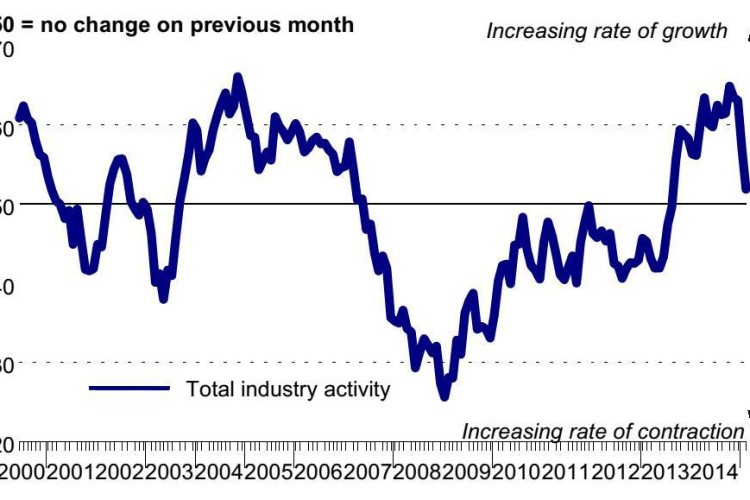Mixed trends were recorded across the three monitored sectors in February. Commercial activity rose at a solid pace, albeit one that was much weaker than in the previous month. Meanwhile, housing activity stagnated and work on civil engineering projects decreased for the first time since September last year.
Meanwhile, the recent weakness of the euro contributed to the strongest rise in input prices since July 2008.
The Ulster Bank Construction Purchasing Managers’ Index (PMI) - a seasonally adjusted index designed to track changes in total construction activity – fell for the fourth successive month in February, posting 52.0, down from 57.1 in January. This signalled a further marked slowdown in the rate of expansion, with the latest increase in activity the weakest in the current 18-month sequence of growth.
Some panellists reported an improvement in business conditions, but others indicated that a lack of new orders had led them to reduce activity.
Simon Barry, chief economist Republic of Ireland at Ulster Bank, said: “The February results of the Ulster Bank Construction PMI survey point to a notable loss of momentum in Irish construction activity last month. The headline PMI index remained above the expansion level of 50 in February, and thus continues to point to risi ng activity levels – as it has done for the past year and a half. However, the key feature of the February results is another sharp drop in the index which indicates that the pace of growth eased significantly last month. This follows the large decline a lso recorded in the January survey, and takes the growth in activity to its weakest in eighteen months.
.png)
“The detail behind the headline reading paints a similarly disappointing picture. Weaker activity patterns were reported across all three main subsectors. Housing activity stagnated last month, a marked turnaround from the record rates of expansion recorded as recently as September of last year. It could be that some of this weakness is linked to higher levels of uncertainty surrounding the housing market outlook related to the recently-introduced Central Bank mortgage lending regulations. However, the weakness emerging in the past couple of months has extended beyond housing. Activity has also softened materially in both commercial and civil engineering which should not be as directly -affected by the Central Bank measures, thus pointing to more broadly -based weakness. Overall, while Irish construction remains in recovery mode, it is clear that the sector’s recovery dynamic has weakened considerably in the early part of this year."
New orders rose modestly in February as the rate of growth continued to slow sharply from the recent peak seen last October. Some panellists reported a drop off in work since the start of the year.
A weaker rise in employment was also seen in February, with the rate of job creation the slowest since June 2014. Some panellists reported having taken on extra staff in anticipation of rising workloads, but other respondents signalled a lack of new work to replace completed projects.
The availability of subcontractors has declined to the greatest extent in three months. This contributed to another sharp increase in rates charged by subcontractors, despite the most marked deterioration in the quality of their work since July 2000.
Got a story? Email news@theconstructionindex.co.uk



